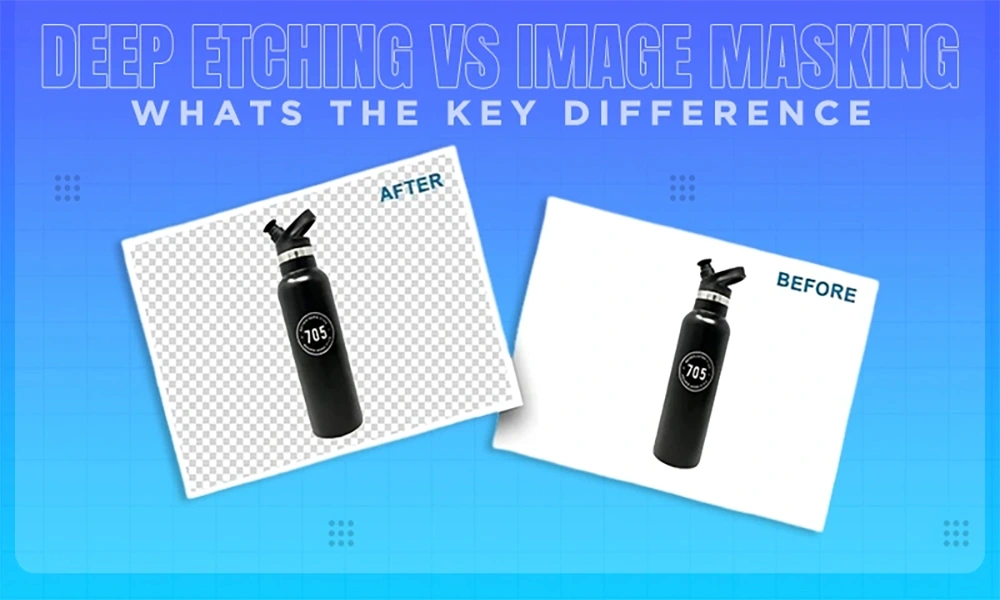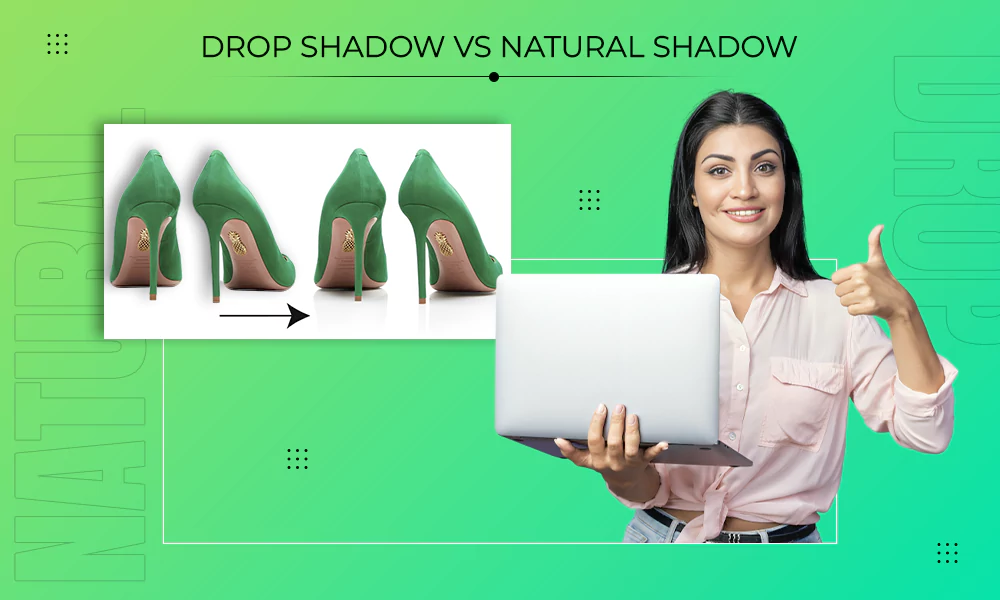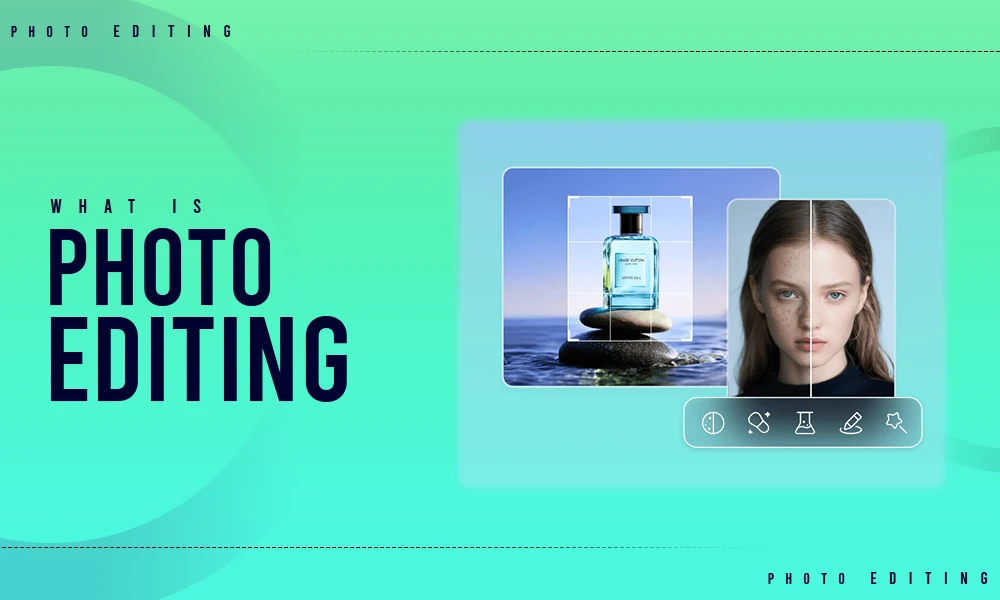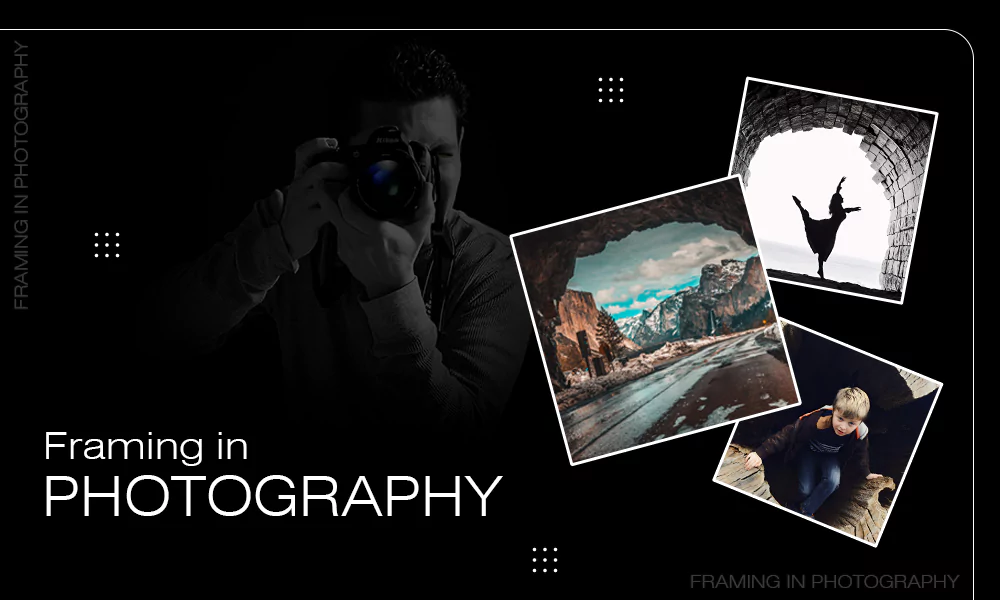Clipping path and image masking are two techniques that help isolate the main subject from the background. Sounds confusing, and wondering why exactly we have two methods for the same result?
Well, that’s where the main distinction lies, it’s not just about techniques but the result we get and the type of subject we use. Based on the object and requirements, a professional editor quickly determines which technique will bring the best and efficient result.
Let’s deep dive and understand more deeply about image masking and the clipping path technique.
What is a Clipping Path?
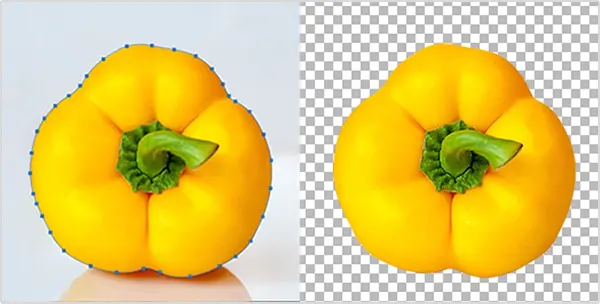
As mentioned above, both editing methods are responsible for cutting out the subject from the background, giving you a clear, undistracted image.
However, if you’re wondering what is clipping path, it’s a technique used on objects that have shapes like squares, ornaments, frames, and so on. That is because with a clipping path, it is difficult to work on delicate shots. A clipping path is used with the pen tool on Adobe Photoshop or any other amateur or professional photo editing software.
Let’s get this concept clear by understanding its types.
Types of Clipping Path
Based on the requirements and process, the types are classified primarily into four types.
1. Single Layer
As the name suggests, a single-layer clipping path where only one outline path is drawn around the subject. Shapes that have simple edges, like a book, a bottle, a phone, and so on, are prime examples.
2. Multi Layer
This involves creating separate paths for different elements within the same image. In this, more than one subject is isolated due to its complex shapes, like jewelry, clothing, and footwear.
3. Illustrator
Limited to vector-based software like Adobe Illustrator, which provides better control over edges and curves. It makes the image clean and defines the edges, hiding everything outside. Logo designing, labeling, and package designs are prime examples.
4. Compound
This involves multiple clipping paths applied to an image with several distinct elements or layers. Objects like shadows, shoe laces, and buckles fall under this category.
What is Image Masking?
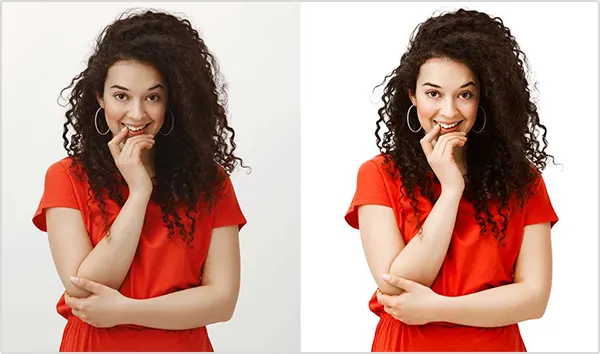
Image Masking is used to work on more intricate subjects like hair, the human body, or any objects that have uneven borders. It provides more cleaner look and refines the overall extraction quality that can be used on any project.
The best part about this method is that it is non-destructive editing, and there are various ways to perform the cutout. It could be by background eraser, magic eraser, and color separation.
Types of Image Masking
Image masking, on the other hand, consists of 8 categories; let’s bifurcate each of them one by one.
1. Layer Masking
Also known as image manipulation, as it gives you control over what to show and what to hide. It can also add the element of opacity and transparency, and it entirely revolves around the Grayscale mode. So black, gray, and white are added to the layer to create such effects.
2. Clipping Mask
To explain it in simple words, the bottom layer defines the shape, and the upper layer gets clipped accordingly. For example, if you keep an image on top of a shape like a circle, the excess image gets cut out.
3. Alpha Channel Masking
This method refers to cutting out fine details like hair, fur, or fabric. This converts contrast data into an alpha channel that refines and smoothens the portion.
4. Channel Mask
In this masking process, red, green, and blue channels are used to create high-contrast selections. Instead of using a cutting tool and choose where the subject stands out. It is an ideal solution for hair, fur, or smoke.
5. Translucent and Transparent Masking
It creates a transparent effect on partially visible subjects like glass, water, etc. In this background gets completely revealed.
6. Collage Masking
As the name suggests, the various subjects are removed from their respective background and combined into a uniform background to give a natural look.
7. Vector Mask
It provides a smooth and clear cutout no matter how much you zoom in. How it works is that basically it uses a mathematical line once you select the subject. And after that removes anything beyond that, it is suitable for logos, icons, and buttons where a smooth cutout is required.
8. Quick Mask
The quick mask quickly selects the area with the help of the Lasso Tool in Photoshop. It makes the selection of irregular shapes easier and even helps in fixing existing selections.
As of now, we have discussed the definition of both the methods and the different types of techniques that are involved. Let’s take a step further and subtly understand the difference between the two.
Difference Between Image Masking and Clipping Path
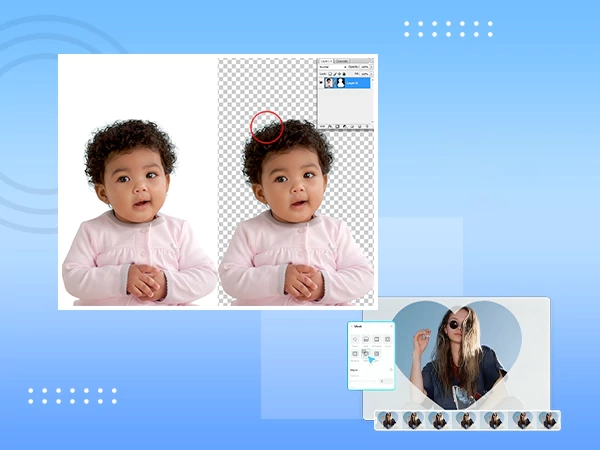
The differentiation between image masking vs clipping path is not just limited to the results and objects we apply it to. The distinction also largely lies within use case, time, skills required, and complexity
So let’s have a look at the table to make the concept of two polarizing editing techniques more familiar.
| Basis | Clipping Path | Image Masking |
| Base | Vector-Based | Pixel-Based |
| Edges | Sharp | Smooth |
| Display | Crisp edges | Smooth edges |
| Time Consumed | Less than image masking | Takes a lot of time |
| Precision Required | Less | More |
| Transparent Object | Not suitable | Suitable |
| Scalability | Easy to scale | Harder to scale |
Why is Image Masking and Clipping Path Used?
Wondering how useful this background removal technique is? Well, it’s a fact that a photographer never publishes their work without making necessary retouching and adjustments. Once it’s done, the photograph, whether it’s a model photoshoot or product photography, is further segregated.
In the case of product photography, once the background is removed, it becomes multifunctional. It can be used on Amazon to list products, create aesthetic advertisements, banners, or social media posts.
Similarly, for a model photoshoot, the extracted subject can be used in any projects.
And how exactly does it help? By providing cost-effective solution, allowing you to use same photograph again and again. Moreover, it saves time and elevates your presentation on different forms of channels.
Even in some cases where the background is acting as distraction, removing them by this technique can be helpful. Whether you’re aiming for minimalism or a complex graphic layout, or a clean subject cutout, these technique acts as a foundation.
Clipping Path Vs Image Masking: Which Technique Gives Better Results?
Before diving into the question that which method gives better results, it is important to identify what is required. In case of any subject that has sharp edges clipping path is preferred because it relies on a vector path, making the process quicker and effective.
On the other hand, the objects with soft edges require precision, and the ideal method is image masking as it uses a pixel-based mask, allowing for to capture of intricate details.
Both technique goes hand in hand and cannot be neglected. And even it would be wrong to consider one method better than the other. For example, in a model photoshoot clipping path can be used to sharply cut out the image from the background, and then by using image masking, all the subtle details like hair, apparel, and a lot more can be blended without harsh borders.
So the combination of both provides crisp and professional results rather than relying on just one technique. But the real problem arises when you don’t have still hands and enough practice to curate such a clean look. So, can’t we just take the help of AI?
Yes, we do have a lot of AI-powered tools to make that happen, but as of now, no such AI tool has been able to match the professional outcomes of an experienced editor.
To get the clean and crisp cutout that perfectly fits the professional’s standard of either business point of view or personal use, it is recommended to avail oneself of image masking and clipping path outsourced services.
Best Image masking and Clipping Path service
Visuals Clipping has become a globally renowned brand for its quality photo editing service, from professional e-commerce photo editing service to automotive photo editing, we can do it all.
For delicate task like clipping path or image masking we have presented our clients with stellar results. Irrespective of subject, image quantity, and deadline, our team of professional editors curates results beyond your expectations.
Even if you are unsatisfied with the initial draft, the option to revise and make adjustments is always there. With no hidden cost, economical pricing, and no hidden charges, we are providing one of the best photo retouching services in the market.
Conclusion
Image masking and clipping path are the essential part of photo editing. Combination of both not only provides excellent visual representation but allows you to flexibly use the subject on various projects.
Whether you are planning to avail professional help from agencies like ours or are keen enough to try it by yourself, the important thing to understand is the nature of the edges.
FAQs
Q1. In what format does Visuals Clipping provide the image?
Ans: You have the flexibility to choose the edited images in your preferred format, whether it is JPG, PNG, RAW, SVG, or so on.
Q2. Can we use AI for background removal?
Ans: Yes, there are various editing tools that uses AI to swiftly remove the background from selected subject. However, many of the times results are not that smooth and ultimately requires manual intervention.
Q3. What’s the easiest way to identify which subject will require what kind of removal technique?
Ans: If the subject has well-defined edges like a rectangle, a square, or even a circle, in those scenarios clipping path is used. For more soft edges where precision and pixel perfection are required, like hair, bottles, or trees.
Q4. What is the major benefit of isolating background?
Ans: By isolating background you are focusing on providing clean images without any distraction. Moreover, you can use the extracted image on various projects and create visually appealing graphics.



